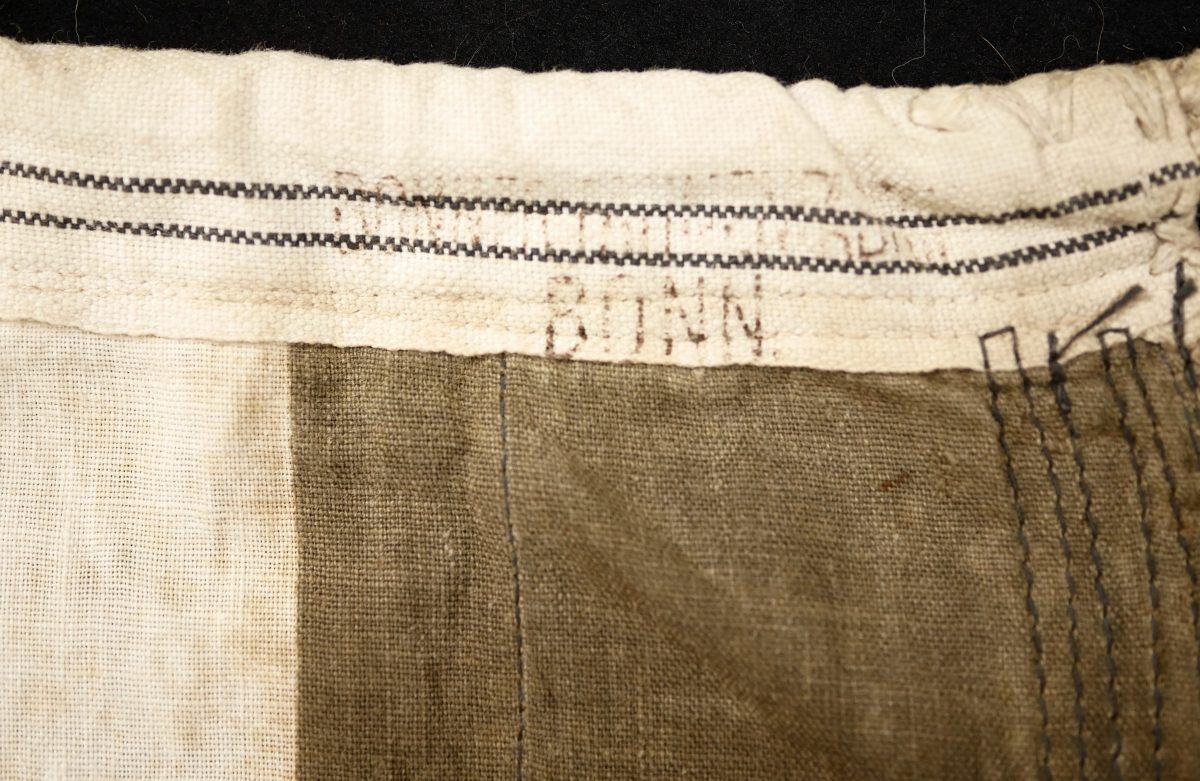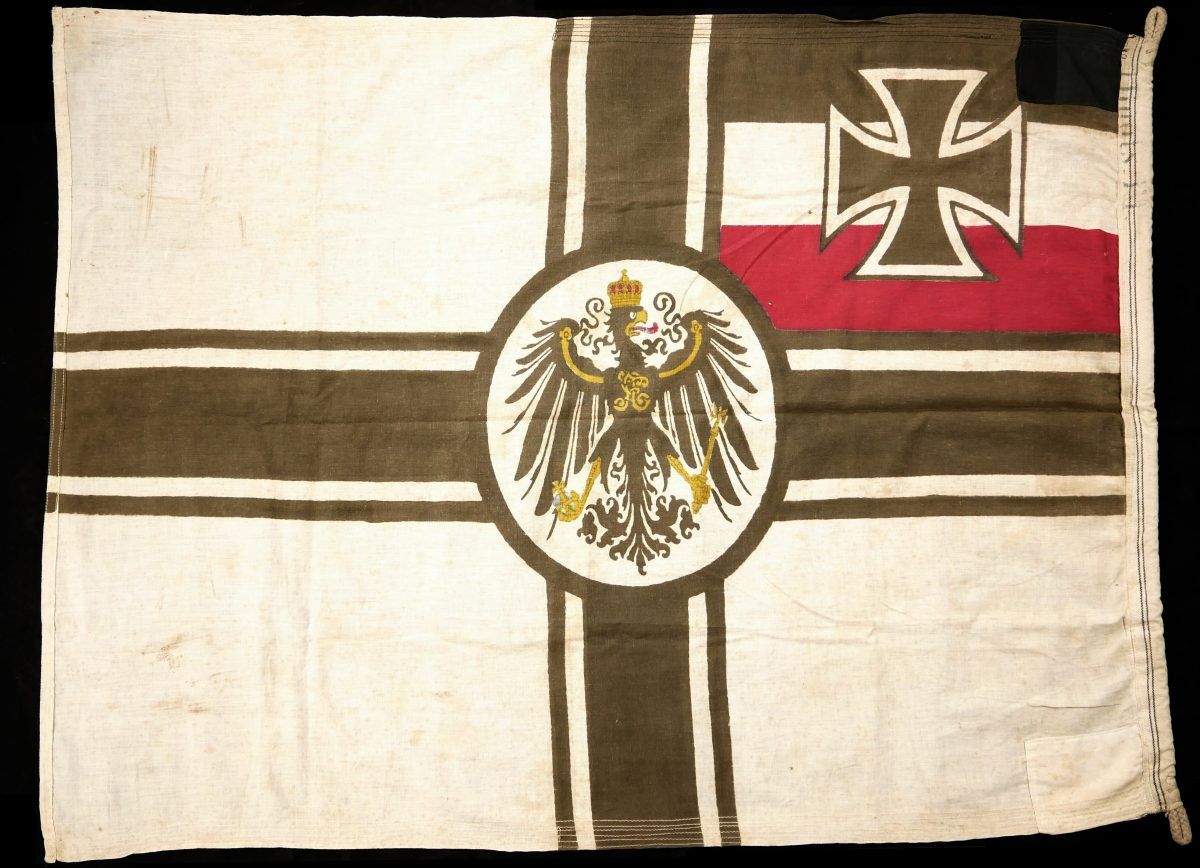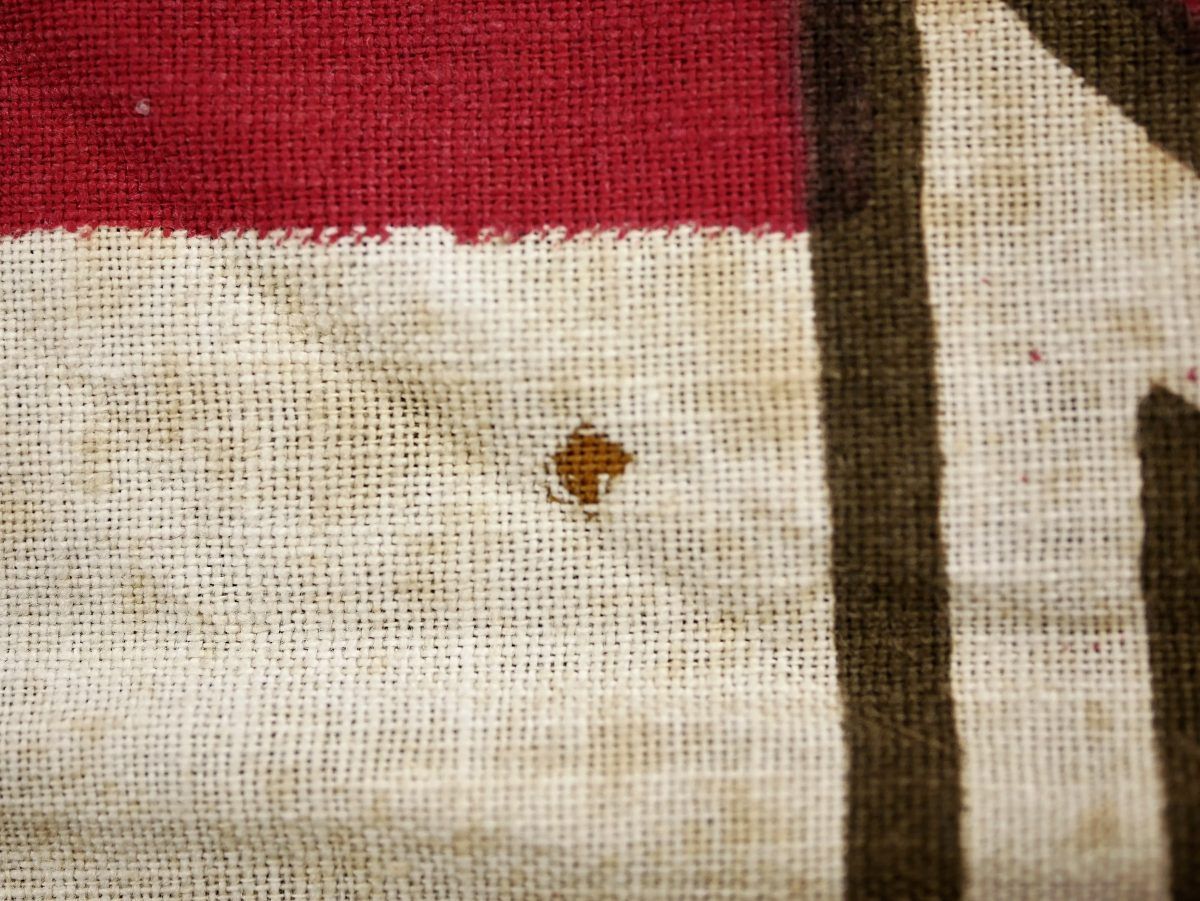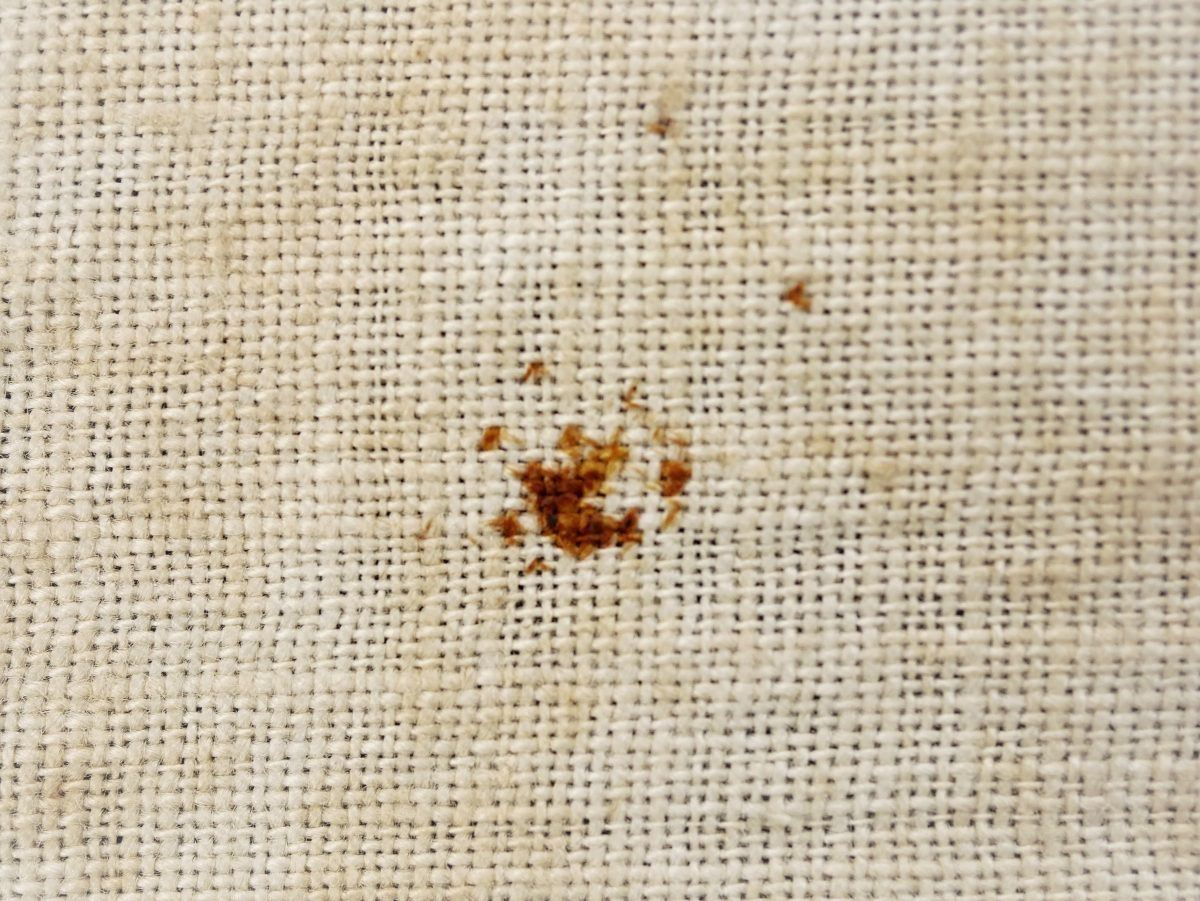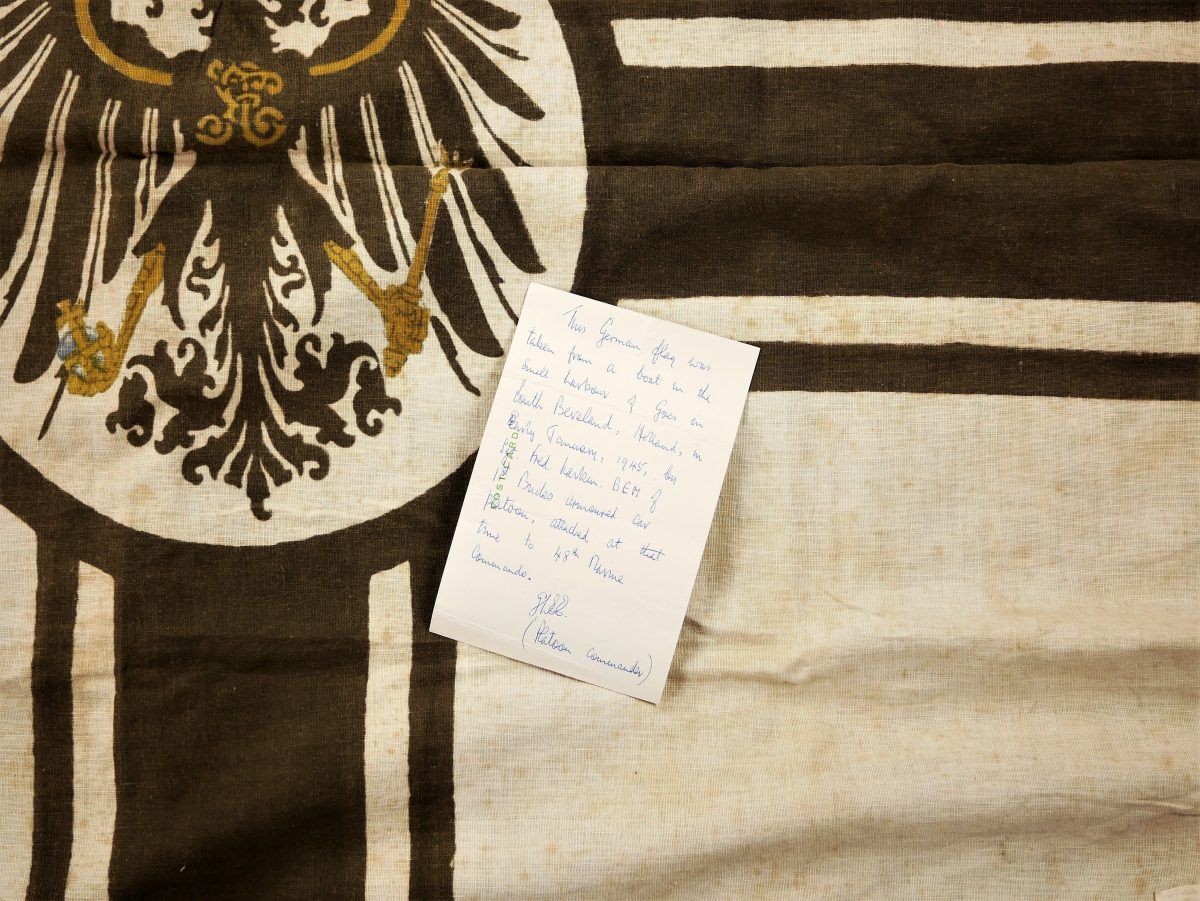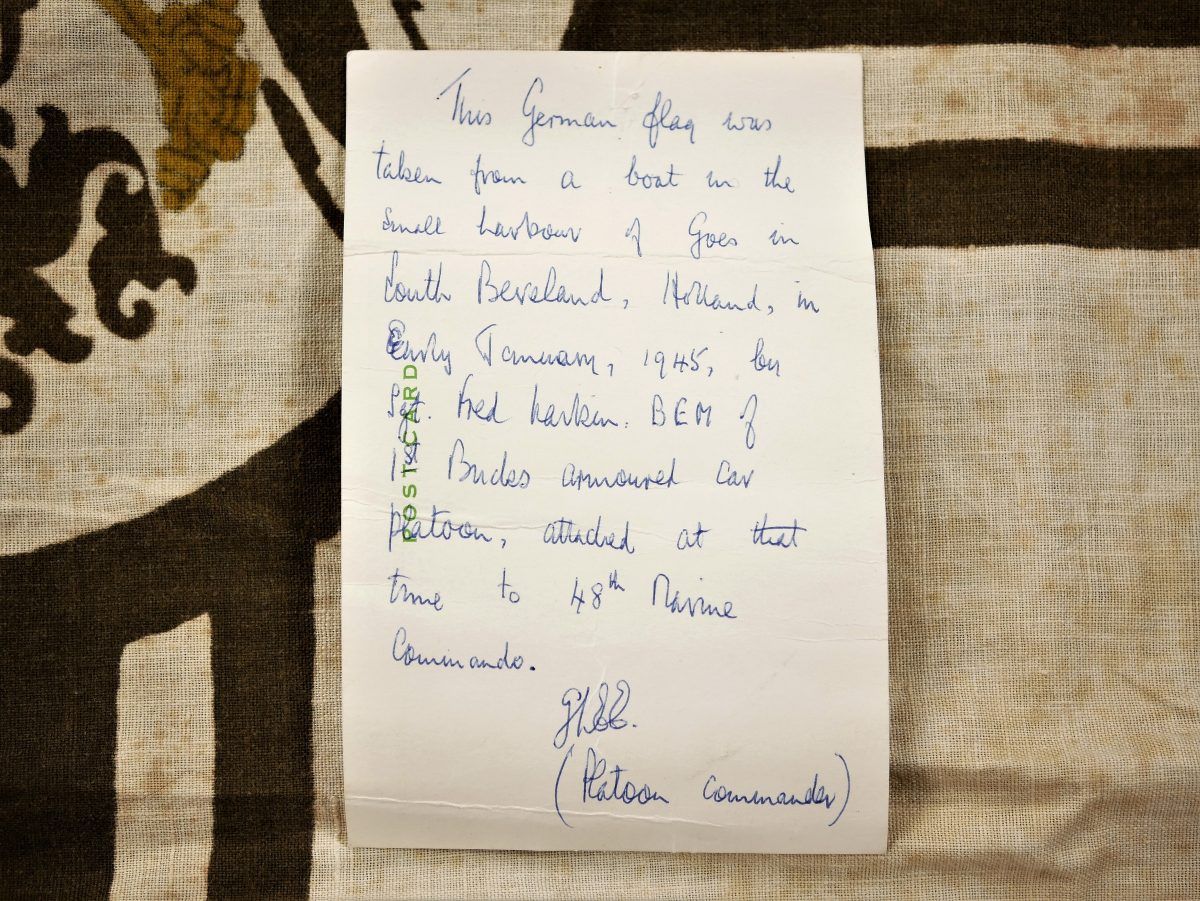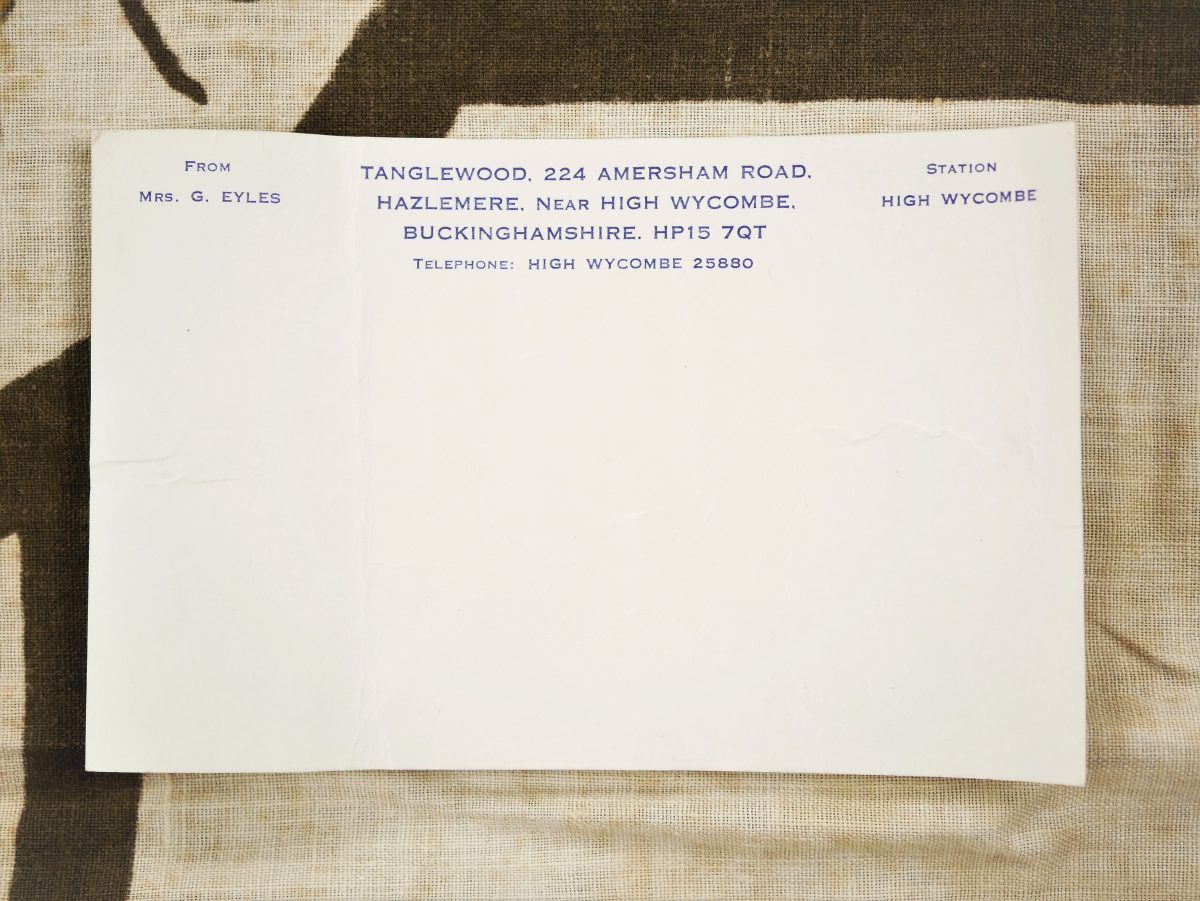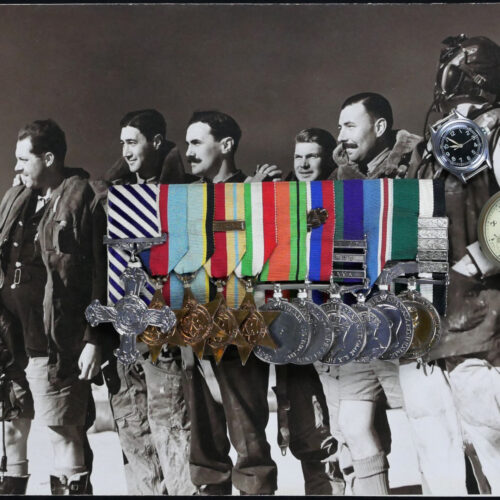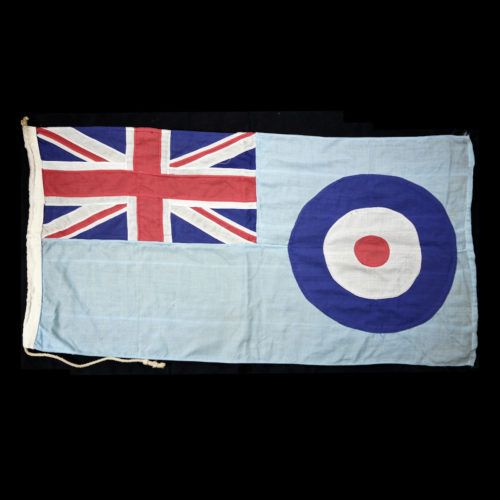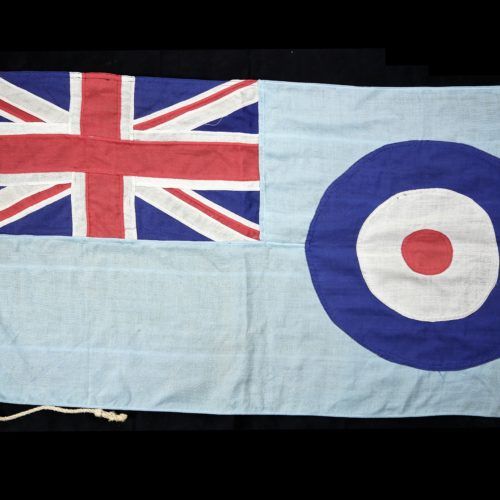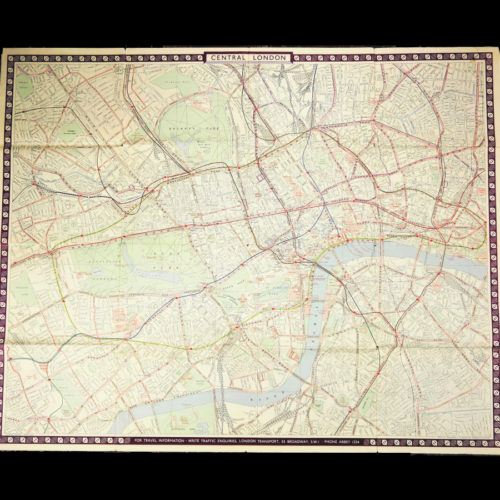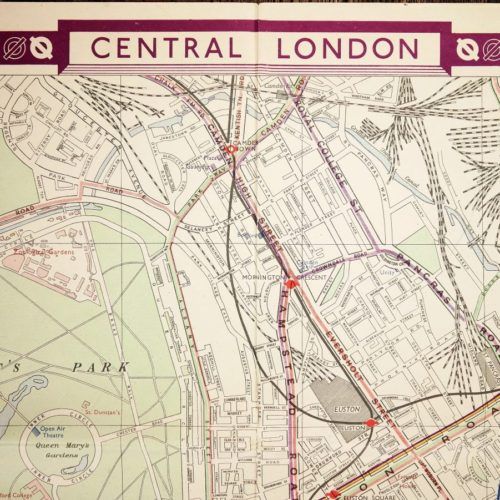Very rare WW2 Kriegsmarine Imperial War Ensign Flag (Reichskriegsflagge)
The history of the War Flag began shortly after the creation of the North German Confederation in 1866. This confederation was comprised of many of the smaller Germanic states formed after the end of the Napoleonic Wars in Europe, with the Kingdom of Prussia acting as the leading state. It basically consisted of all the German states north of the river Main. Its head of state was the Prussian King Wilhelm I.
For the newly established country, it was necessary to create a National Civil Flag as well as a military War Flag. While for the National flag the colours Black-White-Red in a horizontally striped version were chosen, the War Flag looked somewhat different. It was decided that the War Flag must contain a black “Scandinavian Cross”. Such a black cross on a white field had already been the symbol of the “Teutonic Knights” in the 12th Century. The Commander-in-Chief of the North German Navy was Adalbert of Prussia, and he was very interested in flag creations. So he made the first attempt to design a War Flag. This flag design contained three very important Germanic symbols: the Scandinavian cross, the National colours and the Prussian Eagle.
King Wilhelm did agree to the draft, but with one exception: He insisted on adding the Iron Cross that had been part of the War Flag of Prussia since 1818. So the eagle was moved to the intersection of the Scandinavian cross and put on a white disk, while the Iron Cross was set on the white stripe of the National Colours.
The Imperial War Ensign was adopted by the German armed forces on 4 July 1867 and was first hoisted on ships of the North German Navy on October 1, 1867.
There was a minor change made to the eagle in 1892 and to the cross in 1903. It is alleged that the change in 1903 was due to an incident in which a Russian warship mistakenly raised the British white ensign to salute a German naval squadron.
The wonderful flag for sale is a later example which was manufactured between 1903 to 1919 by renowned German flag manufacturer Bonner Fahnenfabrik of Bonn, who were situated on the banks of the River Rhine in Germany.
After Germany’s defeat in WW1 and the subsequent fall of its monarchy, the flag was flown for political and sentimental reasons in the following years. The leadership of the German Navy was still conservative and did not accept the new republican design introduced in September 1919. They refused to hoist the new version and insisted upon the continued use of the old Imperial War Flag of the German Empire. Because of this, the republican design – although produced to some extent – was never used and hoisted on a German warship or anywhere else. The navy continued displaying the Imperial War Flag. On January 1, 1922, an entirely new design replaced the War Flag of the German Empire.
From 1926-1944, the 1903 ensign was raised by the ships of the German Navy on 31 May of each year to commemorate the Battle of Jutland
Many right wing fractions and groups continued to use the Imperial War Flag after 1919 in order to show their political attitudes. This practice has continued down to the present day in Germany.
The Kriegsmarine Imperial War Flag comes with some remarkable history and provenance in that it was captured from a German ship harboured in Goes, South Beveland, Holland in early January 1945 by a Sgt Fred Larkin who was attached to 48th Royal Marine Commando. The flag is accompanied by a signed hand written note from Sgt Larkin’s platoon commander who confirms the capture of the flag by Sgt Larkin.
The British Commandos were formed in 1940 by the order of Winston Churchill, the British Prime Minister. He called for specially trained troops that would “develop a reign of terror down the enemy coast”. At first they were a small force of volunteers who carried out small raids against enemy occupied territory, but, by 1943, their role had evolved into lightly equipped assault Infantry that specialised in spearheading amphibious landings
The Royal Marine Commandos, like all British Commandos, went through the six-week intensive commando course at Achnacarry. The course in the Scottish Highlands concentrated on fitness, speed marches, weapons training, map reading, climbing, small boat operations and demolitions both by day and by night.
No. 48 (Royal Marine) Commando was formed in March 1944 and was the last commando unit formed during the Second World War. The battalion sized formation was assigned to the 4th Special Service Brigade and served in North West Europe, taking part in the Normandy landings and operations around Ostend and Antwerp.
No. 48 (Royal Marine) Commando, together with all the army commandos and some Royal Marine commandos, was disbanded in 1946 and the commando role was taken over by the Royal Marines. However, the present day Parachute Regiment, Special Air Service and Special Boat Service can all trace their origins to the Commandos.
Good original examples of such with accompanying provenance are extremely rare and are highly sought after by military collectors and enthusiasts.



